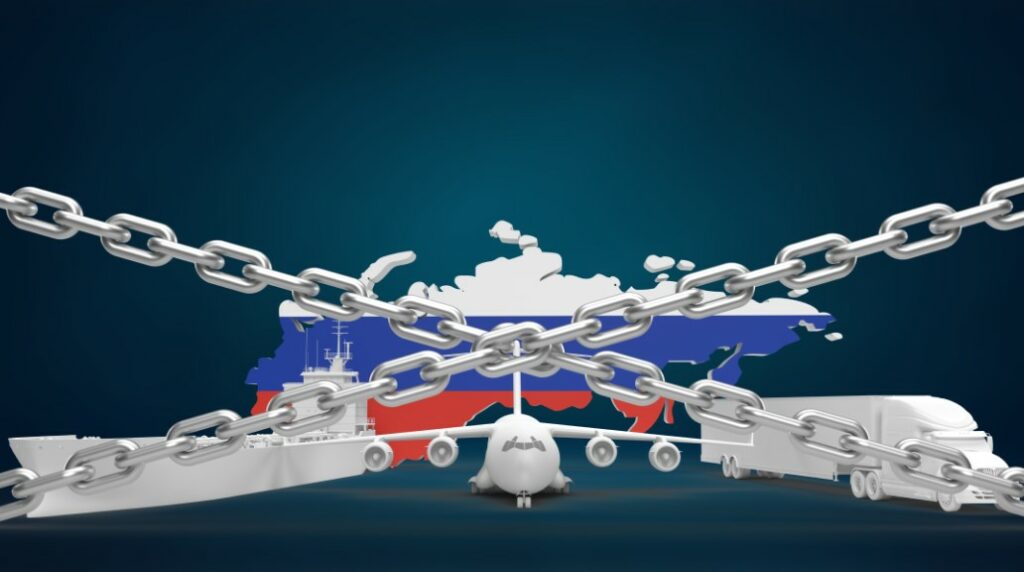By Andrea Little Limbago
Globalization is undergoing a significant transformation. Along geopolitical fault lines, global economies are decoupling, while simultaneously like-minded countries are seeking greater integration. This reglobalization of the international system is defining the new normal, introducing a range of opportunities as well as risks.
The shockingly swift collapse of Silicon Valley Bank (SVB), China’s announcement seeking greater technological self-sufficiency, California’s record-breaking snowfall and floods, and the U.S., U.K., and Australia trilateral pact announcement, all occurring around the same time, are indicative of this new normal.
As the International Monetary Fund’s Managing Director noted, organizations need to “think of the unthinkable” to better build toward resilience in light of disruptions. This requires a mindset shift regarding systemic risk – moving from a siloed view of “known” risks (e.g., the shutdown of a single supplier with poor credit) to a multi-faceted approach that accounts for hyper-dependencies in a world routinely shocked by unforeseen risks (e.g., the 48-hour collapse of an industry-leading and deeply connected bank). Organizations that successfully build on and expand their risk mindset to encapsulate the multitude of economic, political, climatological, and technological transformations underway will be at a competitive advantage going forward; those that fail to do so will be ill-equipped to navigate these “unthinkable” risks.
Multi-faceted Risk and Supply Chain Catastrophe in a Reglobalized World (aka The New Normal)
Traditional risk frameworks crafted over the last few decades are inadequate to address today’s risk landscape consisting of hyperconnected digital economies and multi-layered business ecosystems. That does not mean they aren’t useful — they’re simply not flexible enough to keep pace with modern change.
The first quarter of 2023 alone has witnessed a series of shocks that were once unthinkable. Ransomware infiltrated a major supplier in the semiconductor industry and propagated across technology and defense communities, causing a $200M hit to its revenue, as well as a $250M hit to a customer. The Middle East may be on the verge of a major transformation following an unprecedented, China-brokered deal to reestablish diplomatic relations between longtime bitter foes Saudi Arabia and Iran. The deal reflects a shift in the balance of power and China’s growing influence in the region. And now SVB – dubbed the tech industry’s banker – experienced the second largest bank failure in U.S. history, with ripple effects from China to Europe.
These “unthinkable” events reflect a new status-quo for all manner of risks. For cyber risk, an expanded mindset that includes, but also looks beyond, vulnerabilities is essential. Threats, regulations, and anomalous behavior must also be part of a coordinated cyber risk mindset. On the geopolitical front, organizations must account for changing fault lines which continue to foster new alliances and new divisions. And for financial risk, solvency is foundational, but as the events with SVB illustrate, continuously monitoring solvency alone is not enough. A more nuanced view of financial risk is required to achieve operational resilience against financial volatility in the new normal.
For example, in addition to solvency, volatility of equity returns often represent a timelier examination of the business risk of a company. Equity markets are more sensitive to new information and can react more quickly than solvency metrics based on accounting measures reflect. SVB is particularly instructive. For the five years from 2018-2022, SVB Financial’s market fluctuations largely behaved within an expected range. However, in the 47 trading days between January 3, 2023 and March 9, 2023, SVB experienced volatility outside of the expected range it exhibited the previous five years.
By monitoring stock price volatility outside of historical expectations, organizations can gain a more complete picture of business risk.
Risk Ecosystems in the New Normal
Despite the splintering of many historic trade ties along geopolitical fault lines, the new normal will remain defined by interdependence. The pandemic demonstrated how shocks can propagate across industries and countries, as did Russia’s invasion of Ukraine. In addition, over the last year, global democracies collaborated at unprecedented (for modern times) levels, inspiring a sanctions regime against Russia that continues to grow. Russia’s invasion also stimulated enormous shocks that rippled across interdependent supply chains, from key metals to wheat and grains to natural gas. Organizations that believed themselves immune from the ripple effects were soon exiting Russia, some of which have since seen their stock prices impacted due to direct exposure to the conflict.
In a similar manner, the contagion impact of the SVB collapse continues to garner scrutiny. For instance, customers of HR software startup Rippling experienced payroll delays because it relied on SVB to process the transactions. Thousands of corporate payrolls have been impacted even if they weren’t direct SVB customers. In the new normal, “invisible” software supply chains like this are taking on a greater importance as an expanded view of critical business relationships comes to include everyone from buyer to supplier, investor, or borrower.
These kinds of connections and dependencies affect every industry. Interos’ analysis revealed the top seven industries with business relationships to SVB include: software, biotechnology, healthcare equipment and supplies, communications equipment, pharmaceuticals, semiconductors and semiconductor equipment, and IT services. This diversity shows how far-reaching the effects of such a collapse may be.
Moreover, the contagion concerns are not limited to the U.S. Many Chinese companies are scrambling in light of the collapse. Based on Interos data, roughly 11,000 companies have direct ties to Chinese companies with business relationships with SVB. European banks also experienced a decline in stock prices as contagion fears spread, with Credit Suisse shares falling to a record low on Wednesday.
Operational Resilience in the Face of Potential Supply Chain Catastrophe
A range of forces has ushered in a once-in-a-generation global supply chain transformation –the pandemic, escalating geopolitical tensions, climate change, economic anxiety, and emerging technologies. Global trade is expected to reach a record $32 trillion, while at the same time the pace of global trade growth has slowed and allyshoring is reshaping trade patterns. During a time of heightened transformation, what was unthinkable in previous eras must be imagined — and mitigated against today and tomorrow.
A siloed or outdated approach to risk is not enough to achieving operational resilience amid sweeping global changes, Organizations must continuously monitor a range of new and emerging risks and gain visibility across their extended supply chain. With an expanded view of risk, organizations can also proactively identify potential vulnerabilities in their supply chain and more easily conduct the due diligence required to inform key decisions – such as alternative suppliers, diversification, and reshoring strategies.
Shifting mindsets toward the unthinkable is unfortunately a core component of operational resilience in this new normal. Working together to build collective resilience – through innovations in technology, processes, and collaboration – will be the best defense against the risks you can’t imagine today.
Interos supports organizations seeking to minimize these risks through advanced risk intelligence, supply chain scoring, and relationship discovery technologies that automate assessment, detection, and incident response. This gives procurement and other supply chain leaders a powerful way to quickly produce a list of at-risk suppliers for due diligence and continuous monitoring.
For more information, contact Interos Customer Success: [email protected]


